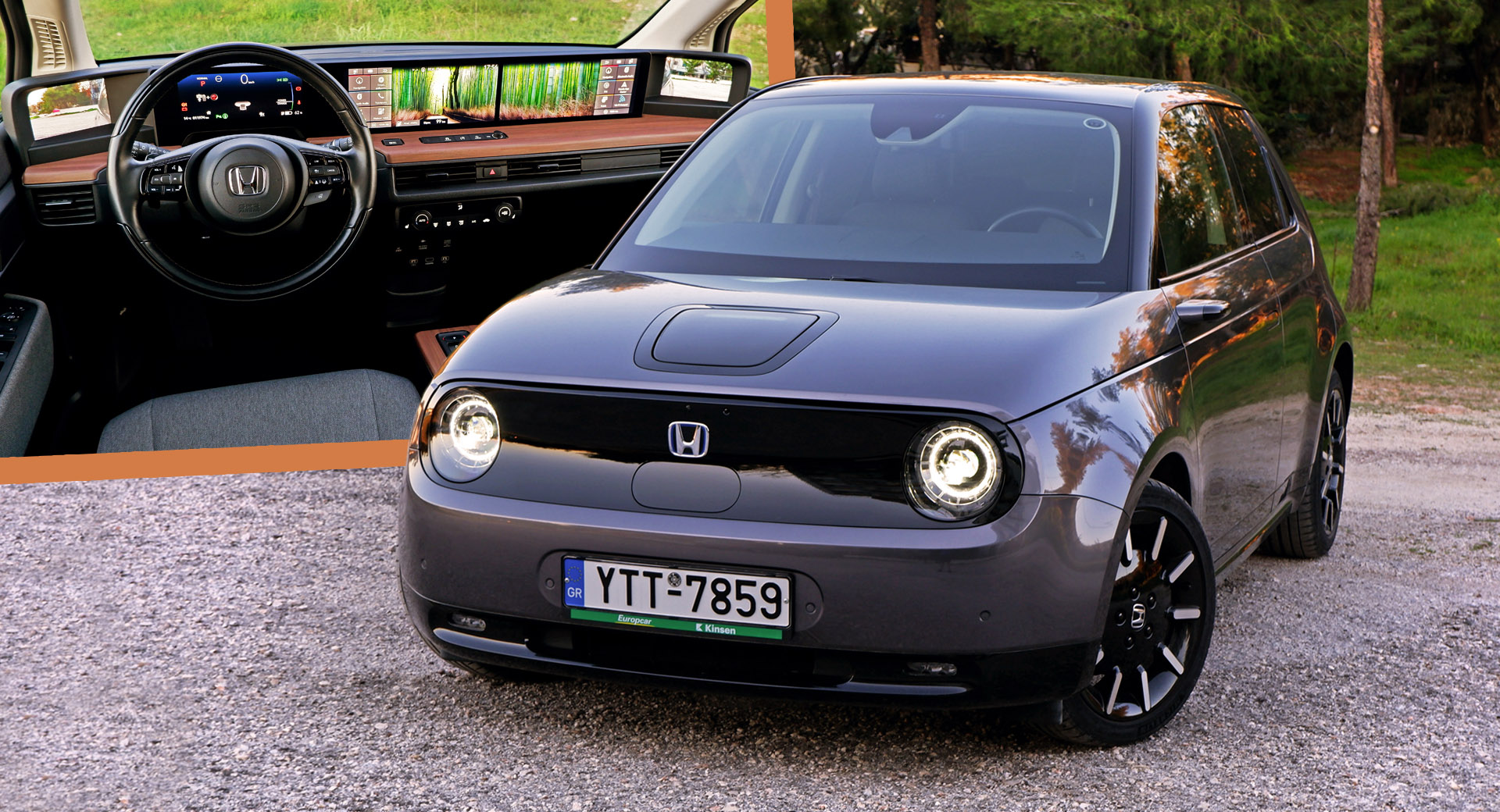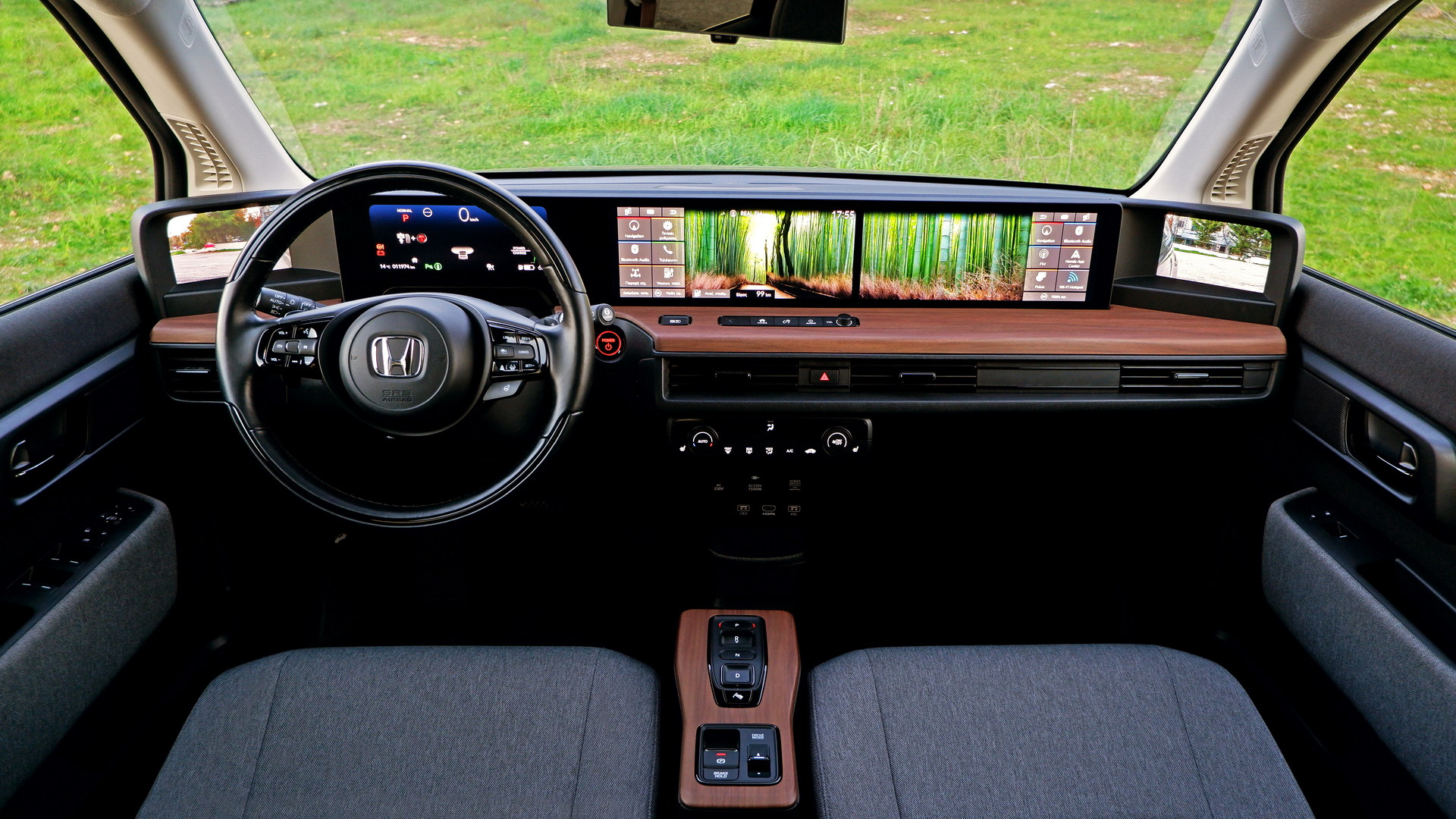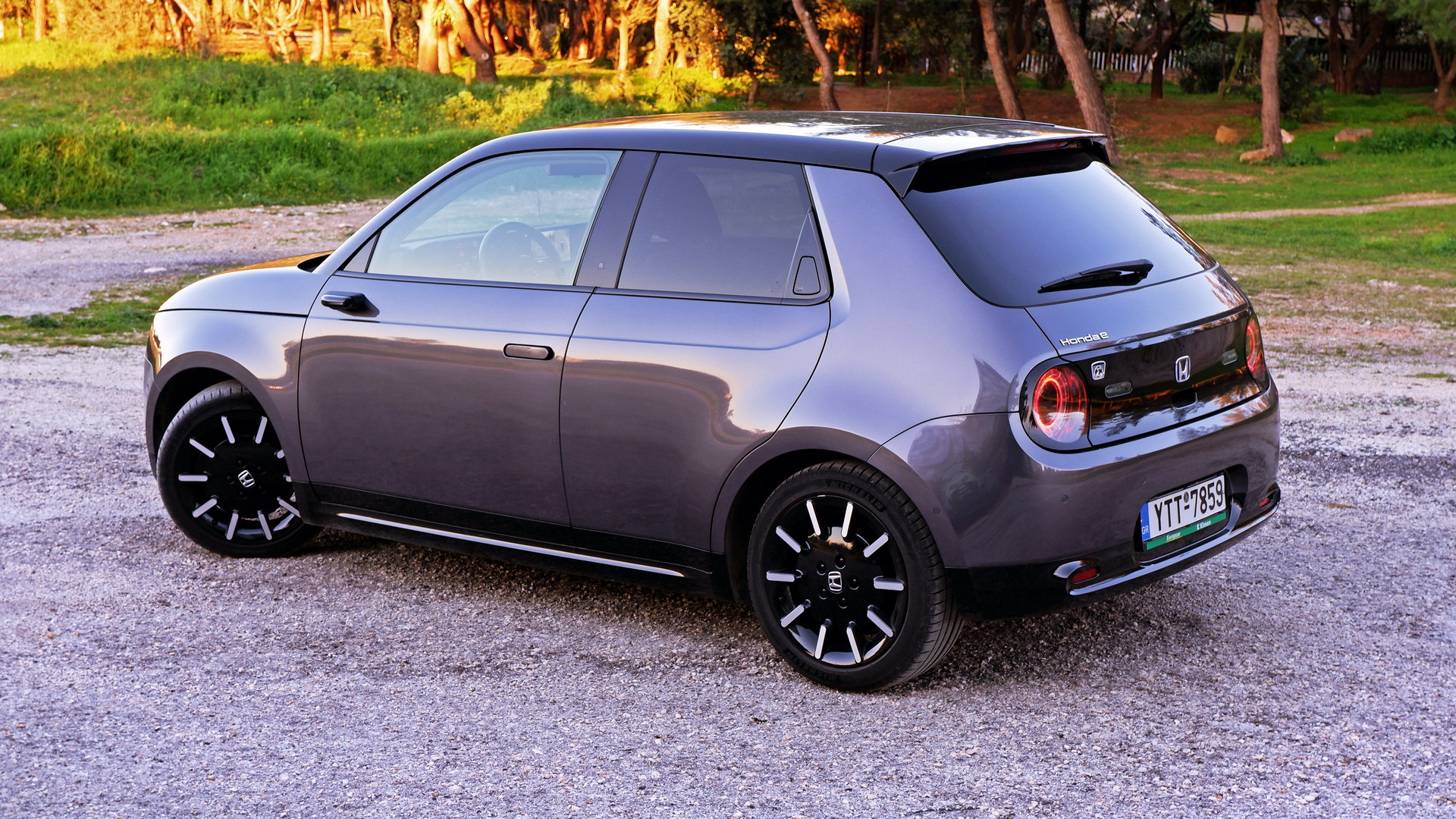When Honda stepped into the game of fully electric citycars, it certainly did it in style. The Honda e, unveiled in production form in 2019, has been praised for its minimalist retro-futuristic design inspired by the first-gen Civic, but it also carries the huge role of being some kind of a halo model for the Japanese brand. This week, we got our hands in one, and we will be driving it for the next few days checking how well it performs in daily tasks.
Besides its style-oriented nature and despite its small size – its measures 3,894 mm (153.3 inches) in length – the Honda e comes packed with technology, including the “in your face” five-screen layout on the dashboard (an equal number of what you’ll find on an S-Class), digital mirrors, and plenty of safety kit thanks to Honda’s latest ADAS.
Read Also: New Fiat 500e Vs. Honda E – Which Small, Trendy EV Would You Rather Have?
Luckily, our Honda e is the Advance variant, which means it gets the more powerful rear-mounted electric motor producing 152 hp (113 kW / 154 PS ) and 315 Nm (232 lb-ft) of torque. While those numbers are not mind-blowing, the 50:50 weight balance, low center of gravity, independent suspension, and Honda’s tradition in sporty vehicles has built our hopes up for better-than-average driving dynamics.
In the 2020s, most EVs have tried to mitigate range anxiety by using larger and more dense batteries. Honda didn’t follow that road, opting for a smaller-than-usual 35.5 kWh lithium-ion battery pack that is good for a WLTP range of 210-222 km (130-138 miles). Most people do less than that in a week but the limited range already sounds worrisome since this tester lives in the apartment without easy access to a charger. The good thing is that the smaller battery means it takes less time to recharge.
While the electric citycar craze is new, the Honda e already has plenty of rivals in the face of the slightly smaller but equally chic Fiat 500, the performance-focused MINI Cooper SE, and the more mainstream Peugeot e-208 and Opel Corsa-e siblings. Having experience from all the aforementioned models, we will be able to benchmark the Honda e against its rivals and see whether it can justify its premium positioning in the market.
Besides the traffic-congested city center, we plan on driving the Honda e for a few kilometers on the highway and test its handling in B-roads of nearby mountains. So feel free to send us your questions on the Honda e Advance in the comments section below, as we discover the quirks of this cute city car.




ivermectine online – buy ivermectin 3 mg buy cheap generic carbamazepine
zithromax 250mg tablet – buy generic zithromax order bystolic 20mg online
order gabapentin for sale – anafranil cheap purchase sporanox sale
buy generic furosemide diuretic – buy nootropil 800 mg online order betamethasone 20gm without prescription
buy augmentin 375mg pill – buy clavulanate pills for sale buy cheap duloxetine
buy generic augmentin – clavulanate oral duloxetine over the counter
buy rybelsus online – cyproheptadine 4mg sale buy periactin 4mg online
buy generic tizanidine over the counter – purchase hydroxychloroquine generic cheap hydrochlorothiazide
order tadalafil 20mg online cheap – viagra 100mg pills for sale cheap generic viagra
order viagra without prescription – tadalafil 40mg price free shipping cialis
cenforce 100mg cheap – aralen tablet order metformin without prescription
buy atorvastatin – norvasc oral buy zestril 5mg generic
order omeprazole generic – buy omeprazole 20mg sale atenolol 100mg brand
depo-medrol generic – buy lyrica 75mg pill order triamcinolone 4mg pills
generic misoprostol 200mcg – generic misoprostol 200mcg how to buy diltiazem